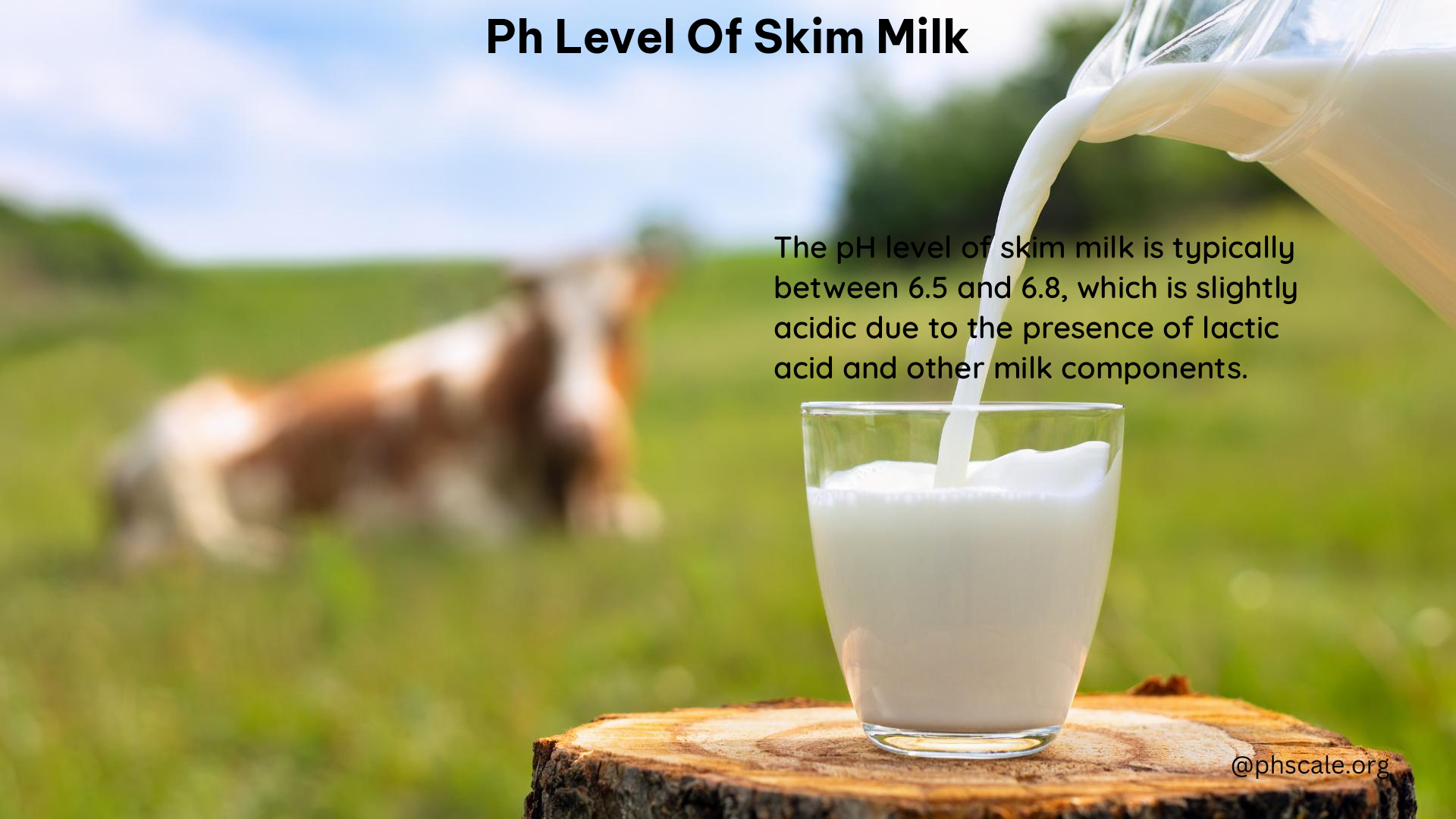The pH level of skim milk is a crucial factor that determines its quality, stability, and overall performance in various applications. Typically, the pH of fresh skim milk ranges between 6.5 and 6.7, a range that is consistent across different sources and processing methods. Understanding the factors that influence the pH of skim milk and the strategies to maintain its optimal balance is essential for ensuring the product’s quality and consistency.
Factors Affecting the pH Level of Skim Milk
The pH level of skim milk can be influenced by several factors, including:
Temperature
The temperature of skim milk can have a significant impact on its pH. When skim milk is heated, its pH tends to decrease. For instance, at ultra-high temperatures (up to 140°C), the pH of skim milk can drop to around 6.6.
Mineral Content
The presence and balance of minerals, such as calcium and potassium, in skim milk can affect its pH. The precipitation of calcium phosphate, for example, can lead to a lower pH in milk permeate.
Protein Content
While milk proteins can offer some buffering against changes in pH, their effect is limited, and the protein content of skim milk can still influence its overall pH.
Additives
The addition of substances like monosodium phosphate, potassium hydroxide, or sodium hydroxide can alter the pH of skim milk, either increasing or decreasing it depending on the specific additive used.
Balancing the pH Level of Skim Milk

To maintain the optimal pH level of skim milk, several strategies can be employed:
Temperature Control
Maintaining a controlled temperature during the processing of skim milk can help minimize pH changes and ensure a consistent pH level.
Mineral Management
Carefully managing the mineral content of skim milk, particularly the levels of calcium and potassium, can contribute to maintaining a stable pH.
Additive Selection
Choosing the appropriate additives, such as monosodium phosphate, potassium hydroxide, or sodium hydroxide, can help adjust the pH of skim milk to the desired level.
Contaminants and Chemicals in Skim Milk
Skim milk can also be affected by various contaminants and chemicals that can influence its pH level and overall quality:
Microorganisms
Skim milk can contain microorganisms that can affect its pH and stability, potentially leading to spoilage or other quality issues.
Enzymes
Heat treatment can inactivate enzymes in skim milk, which can influence its pH and functional properties.
Mineral Impurities
Skim milk can contain mineral impurities, such as calcium and potassium, that can affect its pH and stability.
Home Remedies and Solutions
To maintain the optimal pH level of skim milk at home, consider the following remedies and solutions:
- Store skim milk in a clean, airtight container at a consistent refrigerator temperature to minimize pH changes.
- Handle skim milk hygienically to prevent contamination by microorganisms.
- Avoid heating skim milk excessively, as this can lower its pH.
By understanding the factors that influence the pH level of skim milk and implementing the appropriate strategies to maintain its optimal balance, you can ensure the quality, stability, and performance of this essential dairy product.
References
- Aydogdu, T., O’Mahony, J. A., Huppertz, T., Magan, J. B., & McCarthy, N. A. (2023). Measuring pH of skim milk and milk permeate at ultra-high temperatures at laboratory and pilot scale. Applied Microbiology and Biotechnology, 107(5), 1155–1165. doi: 10.1016/j.idairyj.2022.105383
- ThoughtCo. (2022). What Is the Acidity or pH of Milk? Retrieved from https://www.thoughtco.com/what-is-the-ph-of-milk-603652
- Aydogdu, T., O’Mahony, J. A., Huppertz, T., Magan, J. B., & McCarthy, N. A. (2023). Measuring pH of skim milk and milk permeate at ultra-high temperatures at laboratory and pilot scale. ScienceDirect. doi: 10.1016/j.idairyj.2022.105383
- ResearchGate. (2019). What is the pH of skim milk at 6 oC? Retrieved from https://www.researchgate.net/post/What-is-the-pH-of-skim-milk-at-6-oC
- Meena, G. S., Singh, A. K., Gupta, V. K., Borad, S., & Parmar, P. T. (2018). Effect of change in pH of skim milk and ultrafiltered/diafiltered retentates on milk protein concentrate (MPC70) powder properties. Journal of Food Science and Technology, 55(4), 1550–1561. doi: 10.1007/s13394-018-2774-6.
